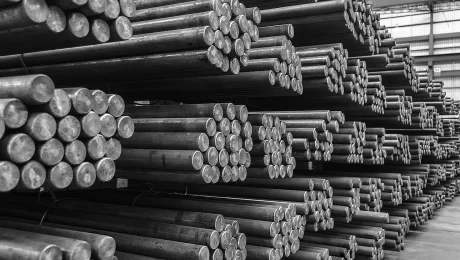The Ultimate Guide to Understanding the Supply Chain: What You Need to Know
Have you ever wondered how your favorite products make their way from factories to your home? Or why sometimes deliveries take longer than expected? The answer lies in one vital system called the Supply Chain. This article will take you on a journey through the world of supply chains, explaining what they are, how they work, and why they matter—no complicated jargon, just simple facts.
What Is a Supply Chain?
A Supply Chain is like a big adventure story of how things move from the start to the finish. It involves all the steps, from making a product to delivering it to the customer. Think of it as a relay race, where each runner passes the baton to the next until the product reaches you. It includes several parts:
-
Suppliers: These are the companies or people that produce raw materials like steel, plastic, or fabric. For example, for making steel round bars, steel producers provide the raw material.
-
Manufacturers: They turn raw materials into finished products — like turning steel into round bars.
-
Warehouses: Places where products are stored before they are sent out.
-
Distributors and Logistics: This includes trucks, ships, and airplanes that move products from factories to stores or warehouses.
-
Retailers: The shops or online stores where you buy the product.
-
Consumers: That’s you! Who finally gets to enjoy the product.
Why Is the Supply Chain Important?
Understanding the Supply Chain helps explain why some products are hard to find, why prices change, or why deliveries can be delayed. Companies need a good supply chain so they can make products quickly, keep costs down, and satisfy customers. If any part of the chain has problems, it can cause delays or shortages.
How the Supply Chain Affects Things You Use Daily
Whether it’s your smoothie straw, your favorite toy, or a steel round bar used in construction, the Supply Chain makes sure these items are available when you want them. For example:
-
Steel Round Bars: They start in steel factories, go through processing plants, and end up in building sites. Any disruption in the supply chain, like a factory shutdown, can slow down construction projects or increase costs.
-
Electronics and Gadgets: Chips and components move across many countries before reaching your hands. A disturbance here can mean longer wait times or higher prices.
-
Clothing and Shoes: Raw fabrics are sent to factories, then shipped worldwide, all moving through a network called the supply chain.
Common Challenges in the Supply Chain
Even though supply chains are designed to work smoothly, they face problems like:
-
Supply Disruptions: These can happen due to natural disasters, political issues, or pandemics, stopping or slowing down production.
-
Shipping Delays: Problems at ports or with transport can delay products.
-
Rising Costs: When raw materials like steel become more expensive, product prices go up.
-
Inventory Issues: Too much or too little stock can cause waste or shortages.
How Companies Improve Their Supply Chains
Smart companies work hard to make their supply chains stronger and more flexible. They do things like:
-
Diversifying Suppliers: Not relying on just one supplier for raw materials.
-
Using Technology: Software to track shipments and manage inventories, so everything runs smoothly.
-
Planning for Risks: Preparing backup plans in case of problems.
What the Future Holds for Supply Chains
The supply chain world is changing fast. Innovations like automation, artificial intelligence, and greener logistics are making it more efficient and eco-friendly. More companies are also looking at ways to make their supply chains more resilient to unexpected problems.
Summary
The Supply Chain is a vital part of how products are made, moved, and sold. Whether for steel round bars used in construction or everyday items, it keeps things flowing smoothly. By understanding how it works, you can better see the big picture behind the products you use every day.
Keep an eye on future developments in Supply Chain management, because it’s an ever-changing field that shapes our world in many ways. Want to dive deeper? Stay tuned for more insights into how technology and innovation are transforming the supply chain landscape.
Secondary keywords: logistics management, inventory control, supply chain disruptions, transportation, raw materials

